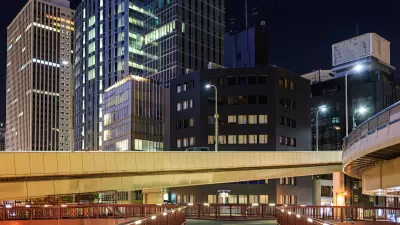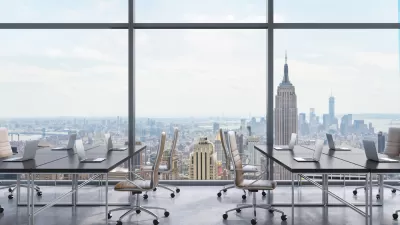The adaptive reuse of non-residential buildings has soared in recent years as demand for office space drops and the housing shortage deepens.

With demand for office space remaining low, office-to-apartment conversions continue to lead the adaptive reuse trend at 28 percent of projects, writes Mary Salmonsen in Smart Cities Dive. Hotels are the second largest source of residential conversions at 22 percent.
“Apartment conversions have risen 25% in the two years since the start of the COVID-19 pandemic, with 28,000 new units on the market converted from other property types, according to a report from RentCafe.” Of these, more than 11,000 units are in former office spaces, a growth of 40 percent between 2020 and 2021. According to the RentCafe report, “Larger office buildings in abandoned central business districts are better suited to conversion than the often-smaller office complexes distributed around the suburbs.”
Washington, D.C. leads the trend with 5.6 percent of the nation’s total adaptive reuse projects. “Philadelphia gained 1,552 converted units during this period, while Chicago converted older buildings into 1,139 new apartments.” This year, “Los Angeles is leading the nation in adaptive reuse construction for the first half of 2022 with 1,242 new deliveries — already the best year for adaptive reuse in the city’s history — and another 4,130 units in the construction pipeline.”
FULL STORY: Office-to-apartment conversions surge

Study: Maui’s Plan to Convert Vacation Rentals to Long-Term Housing Could Cause Nearly $1 Billion Economic Loss
The plan would reduce visitor accommodation by 25,% resulting in 1,900 jobs lost.

Alabama: Trump Terminates Settlements for Black Communities Harmed By Raw Sewage
Trump deemed the landmark civil rights agreement “illegal DEI and environmental justice policy.”

North Texas Transit Leaders Tout Benefits of TOD for Growing Region
At a summit focused on transit-oriented development, policymakers discussed how North Texas’ expanded light rail system can serve as a tool for economic growth.

Comment: EPA Cuts will Send Atlanta Back to Eye-burning Ozone, Lung-damaging Smog, and Raw Sewage in the Chattahoochee River
A veteran political journalist takes stock of the hard-earned ground Georgia stands to lose with slashed environmental protection.

How Community Science Connects People, Parks, and Biodiversity
Community science engages people of all backgrounds in documenting local biodiversity, strengthening connections to nature, and contributing to global efforts like the City Nature Challenge to build a more inclusive and resilient future.

Alabama: Trump Terminates Settlements for Black Communities Harmed By Raw Sewage
Trump deemed the landmark civil rights agreement “illegal DEI and environmental justice policy.”
Urban Design for Planners 1: Software Tools
This six-course series explores essential urban design concepts using open source software and equips planners with the tools they need to participate fully in the urban design process.
Planning for Universal Design
Learn the tools for implementing Universal Design in planning regulations.
City of Santa Clarita
Ascent Environmental
Institute for Housing and Urban Development Studies (IHS)
City of Grandview
Harvard GSD Executive Education
Toledo-Lucas County Plan Commissions
Salt Lake City
NYU Wagner Graduate School of Public Service




























